Abstract
OBJECTIVE: To determine the effects of managed care growth on the incomes of primary care and specialist physicians. DATA SOURCES: Data on physician income and managed care penetration from the American Medical Association, Socioeconomic Monitoring System (SMS) Surveys for 1985 and 1993. We use secondary data from the Area Resource File and U.S. Census publications to construct geographical socioeconomic control variables, and we examine data from the National Residency Matching Program. STUDY DESIGN: Two-stage least squares regressions are estimated to determine the effect of local managed care penetration on specialty-specific physician incomes, while controlling for factors associated with local variation in supply and demand and accounting for the potential endogeneity of managed care penetration. DATA COLLECTION: The SMS survey is an annual telephone survey conducted by the American Medical Association of approximately one percent of nonfederal, post-residency U.S. physicians. Response rates average 60-70 percent, and analysis is weighted to account for nonresponse bias. PRINCIPAL FINDINGS: The incomes of primary care physicians rose most rapidly in states with higher managed care growth, while the income growth of hospital-based specialists was negatively associated with managed care growth. Incomes of medical subspecialists were not significantly affected by managed care growth over this period. These findings are consistent with trends in postgraduate training choices of new physicians. CONCLUSIONS: Evidence is consistent with a relative increase in the demand for primary care physicians and a decline in the demand for some specialists under managed care. Market adjustments have important implications for health policy and physician workforce planning.
Full text
PDF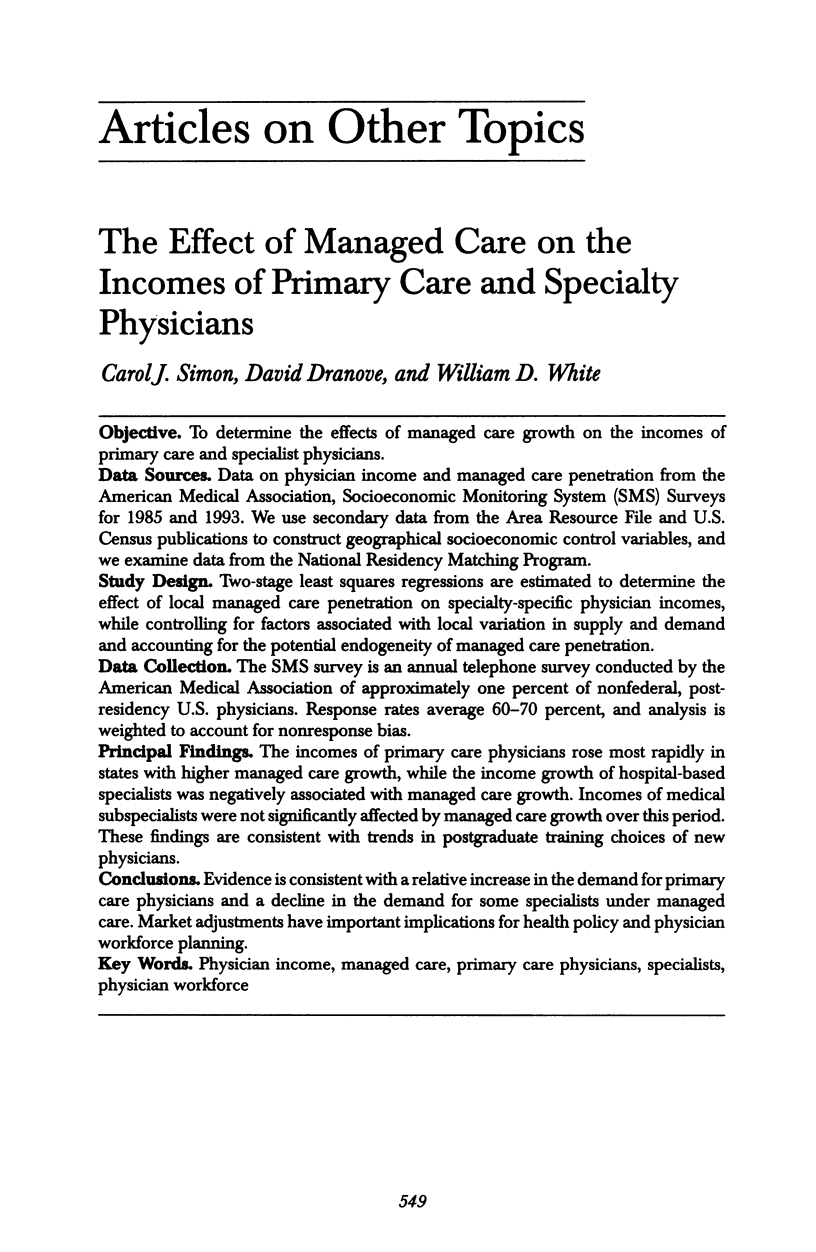
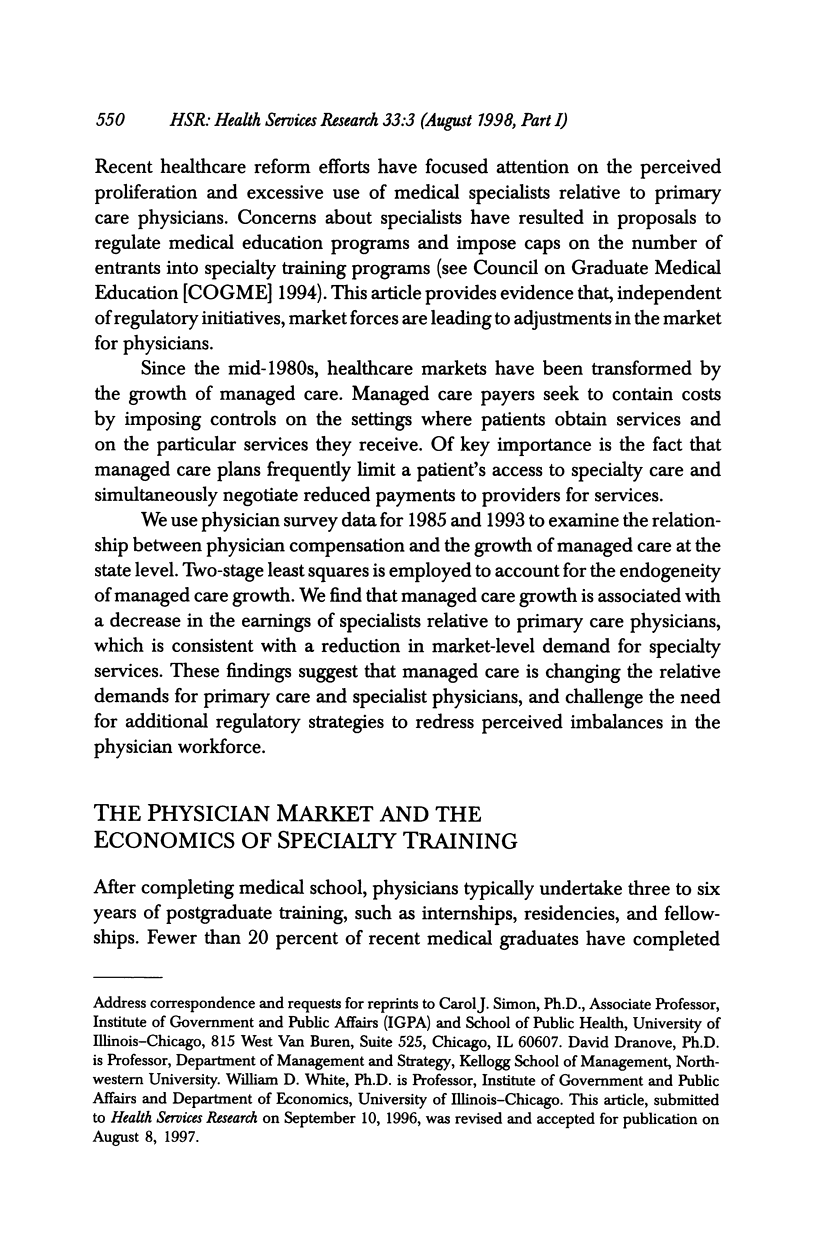
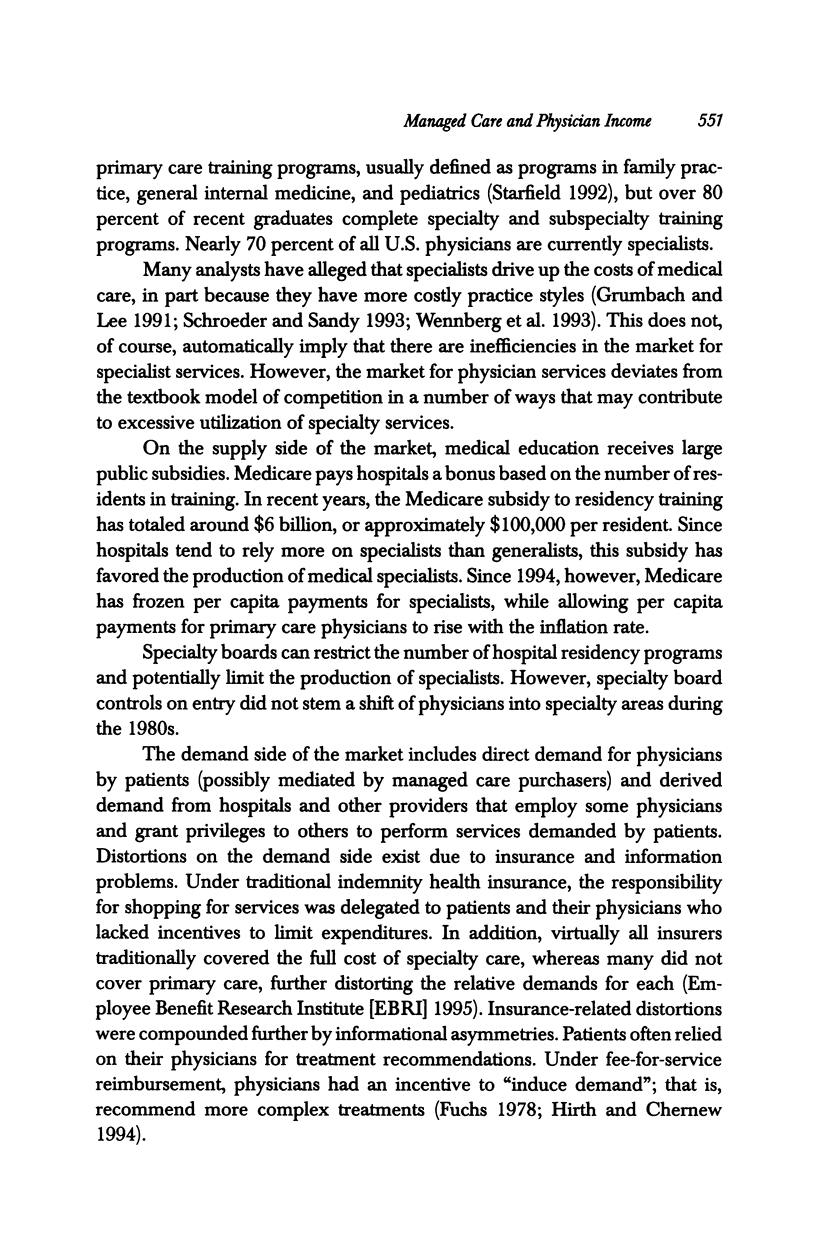




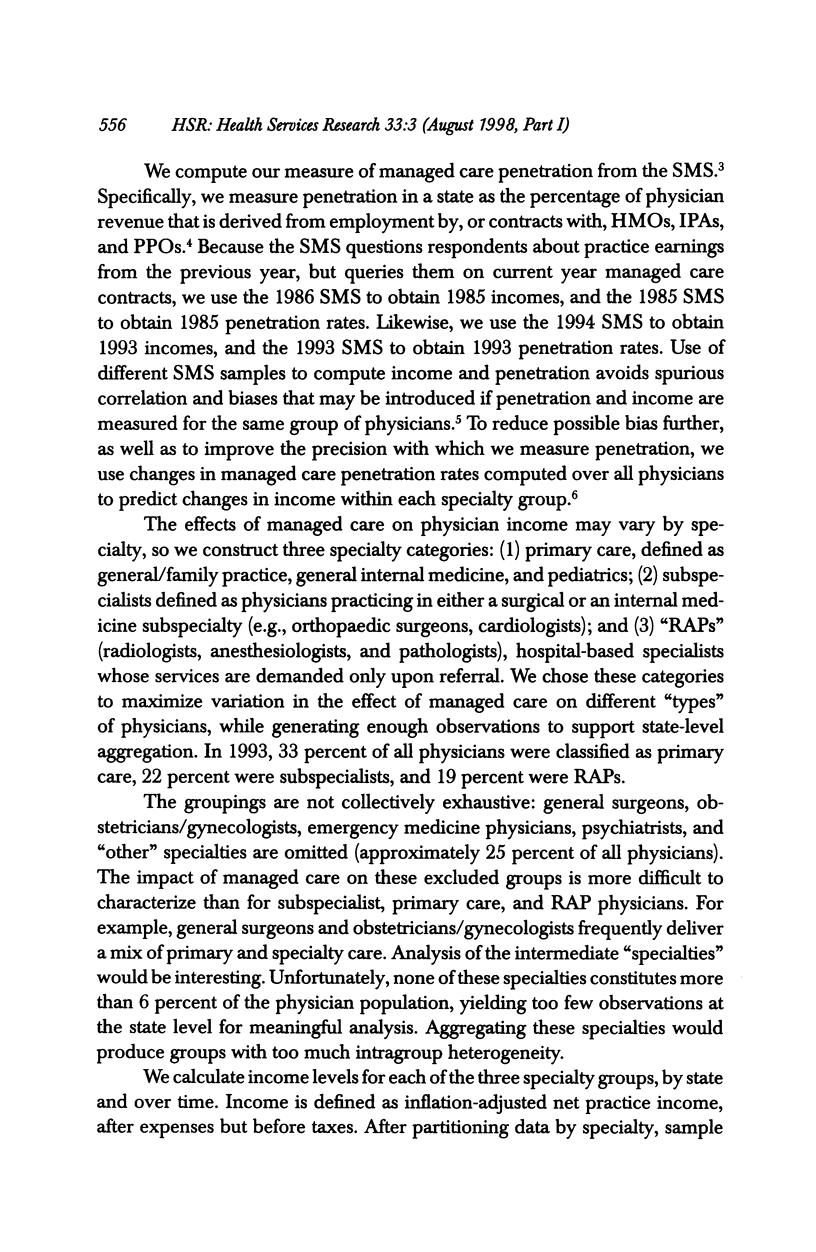

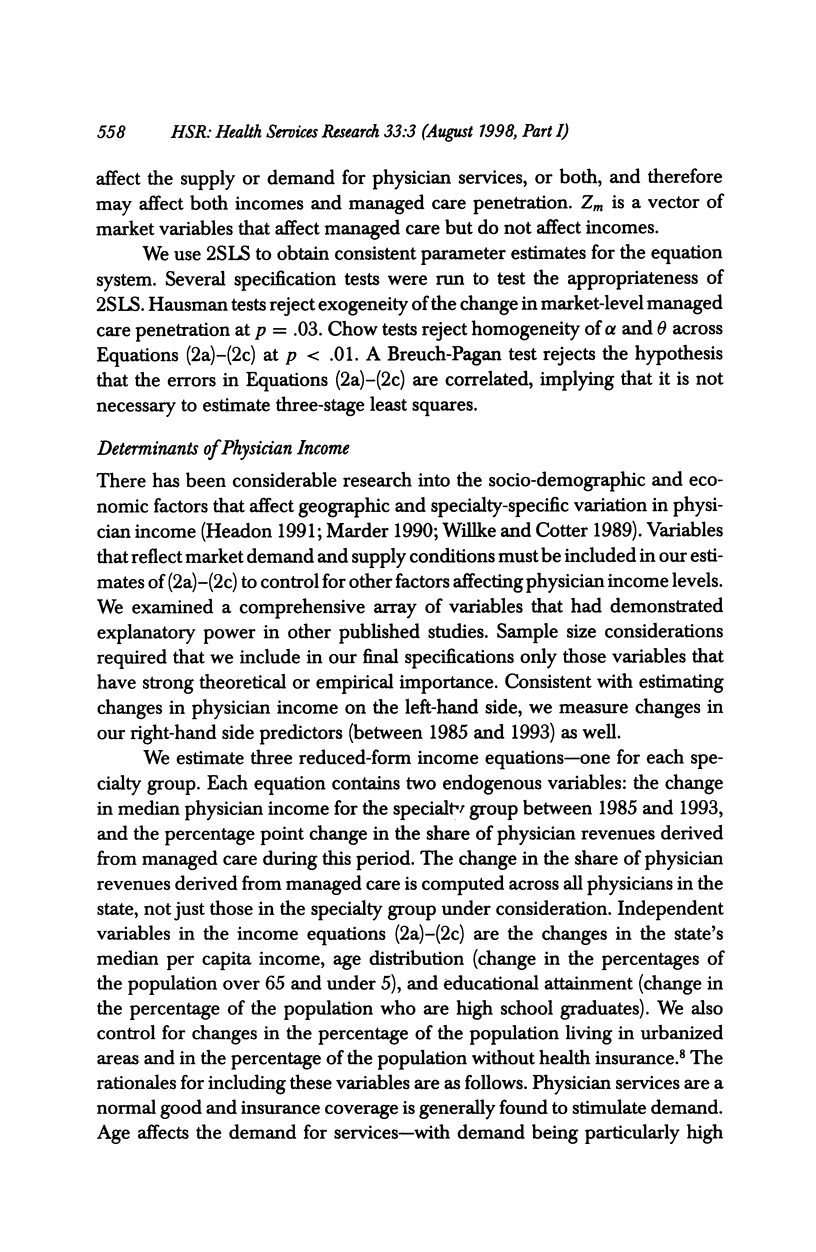
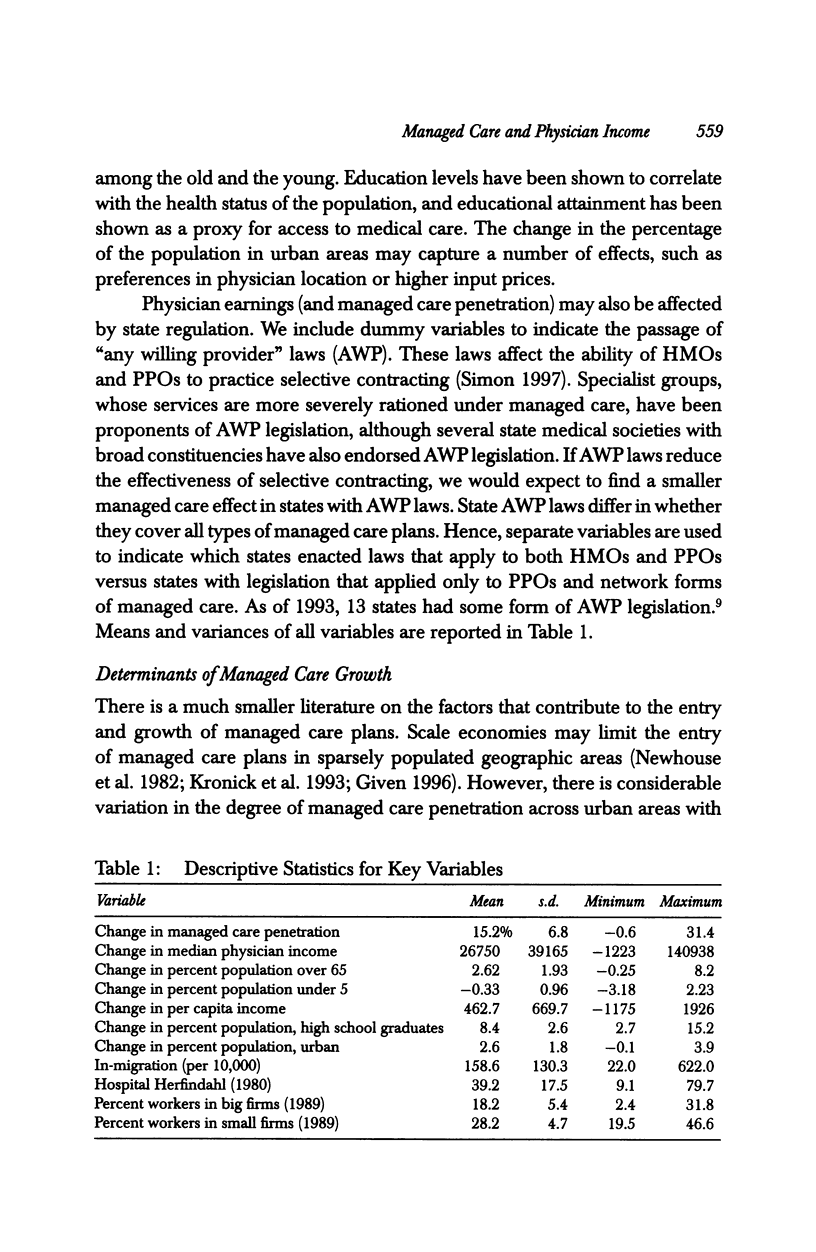
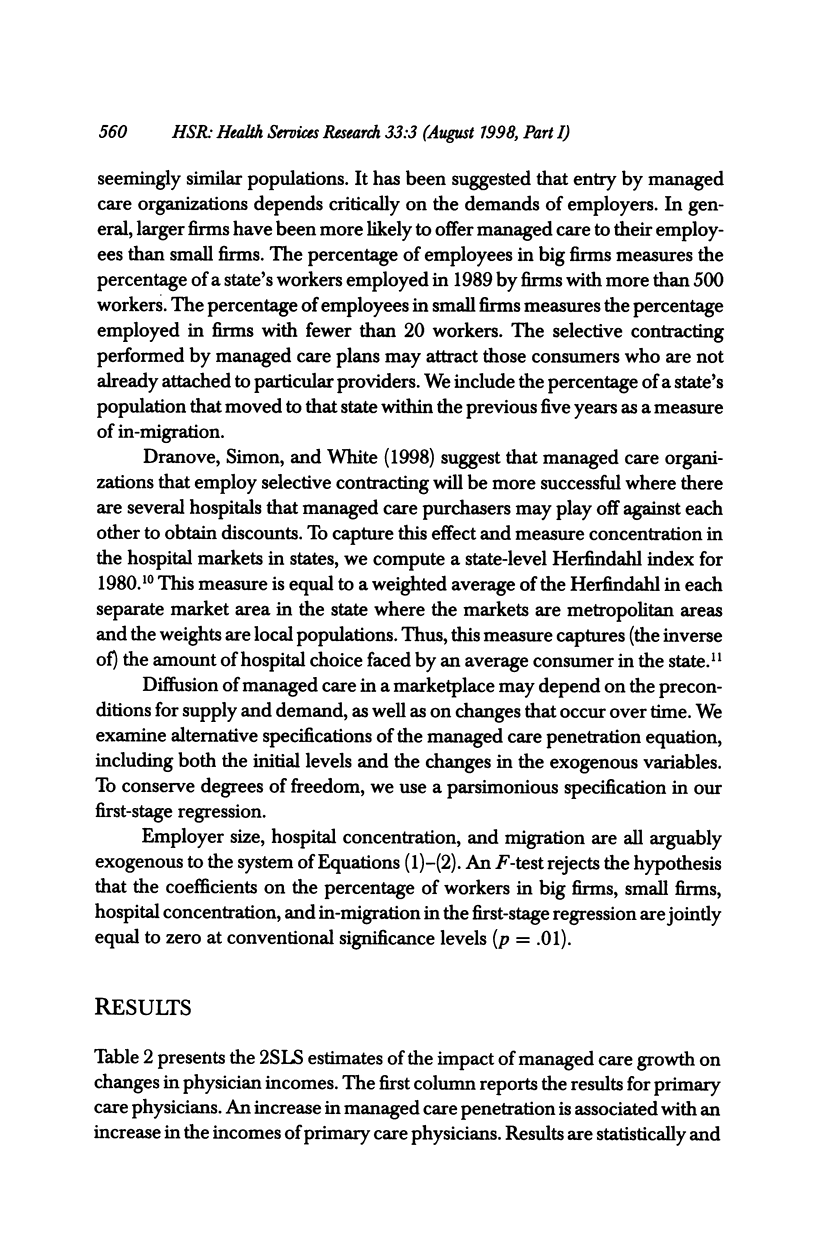
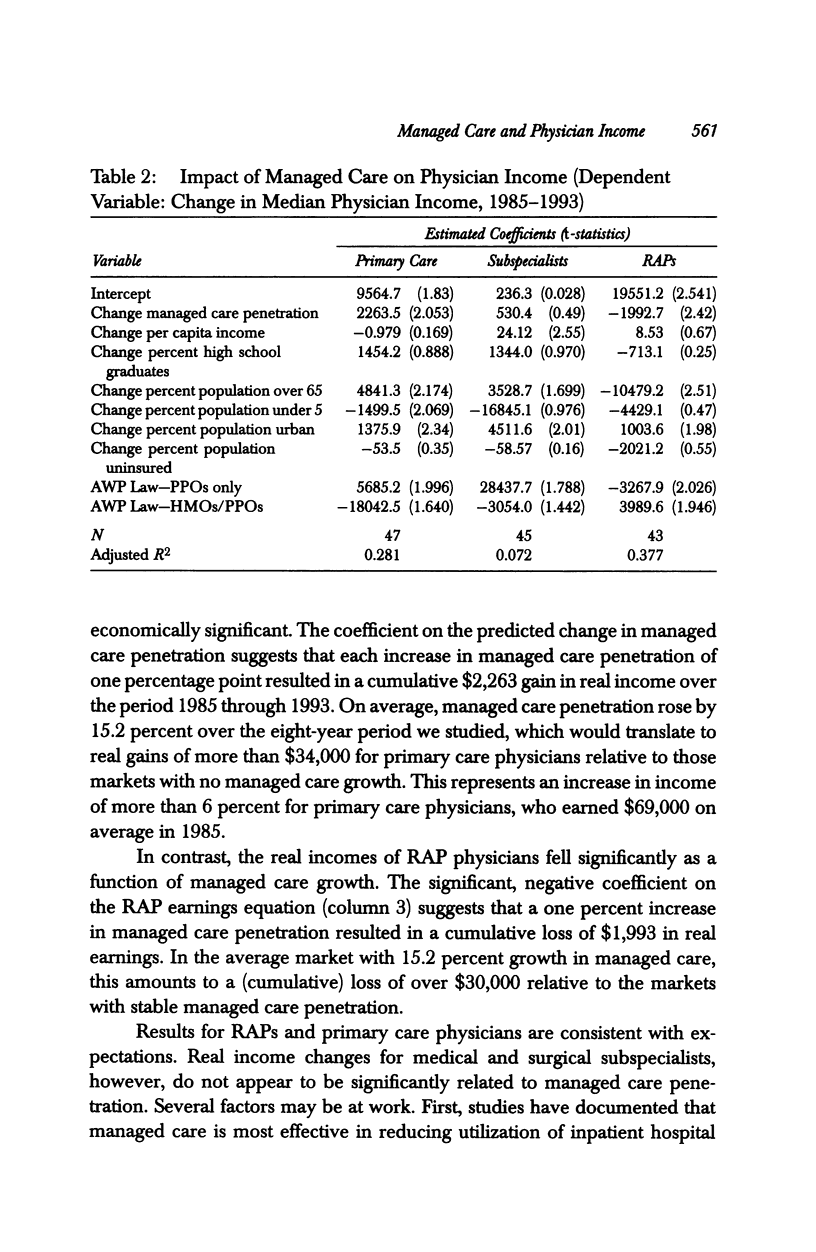
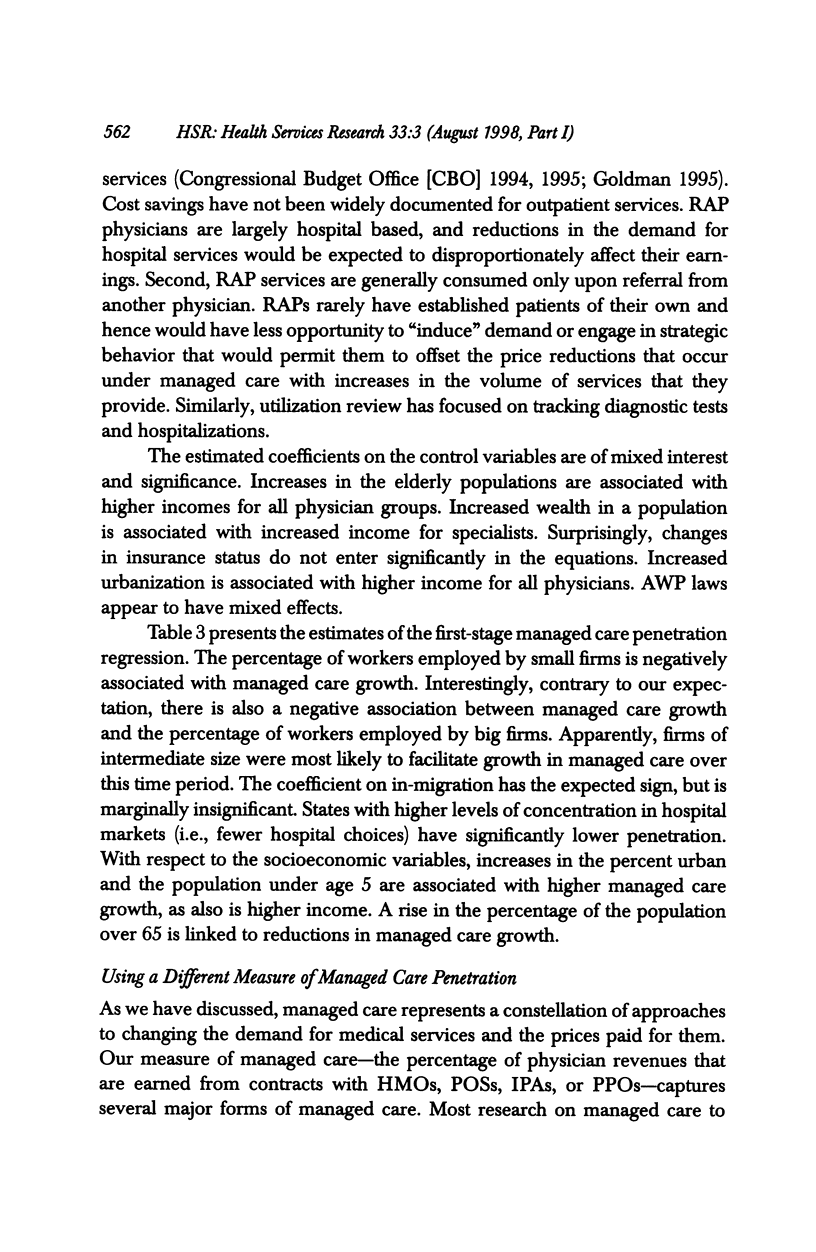
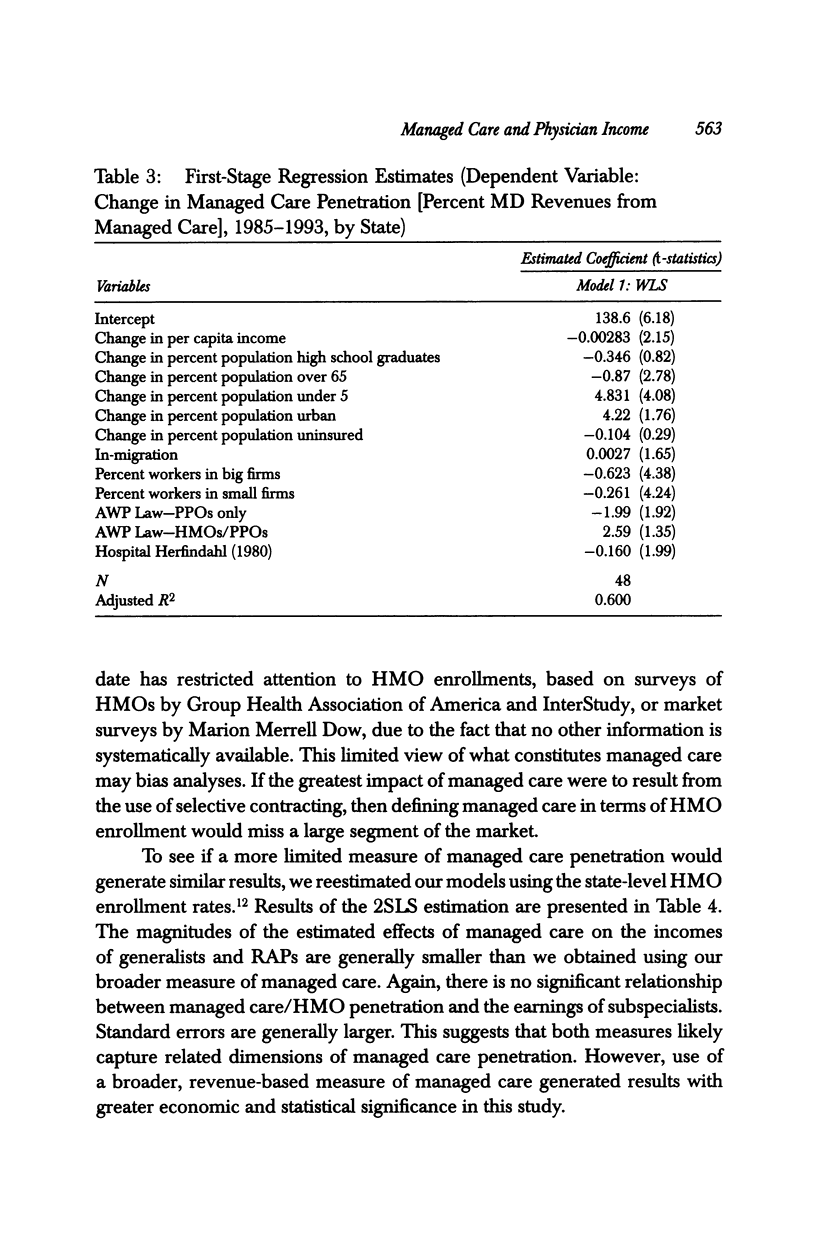
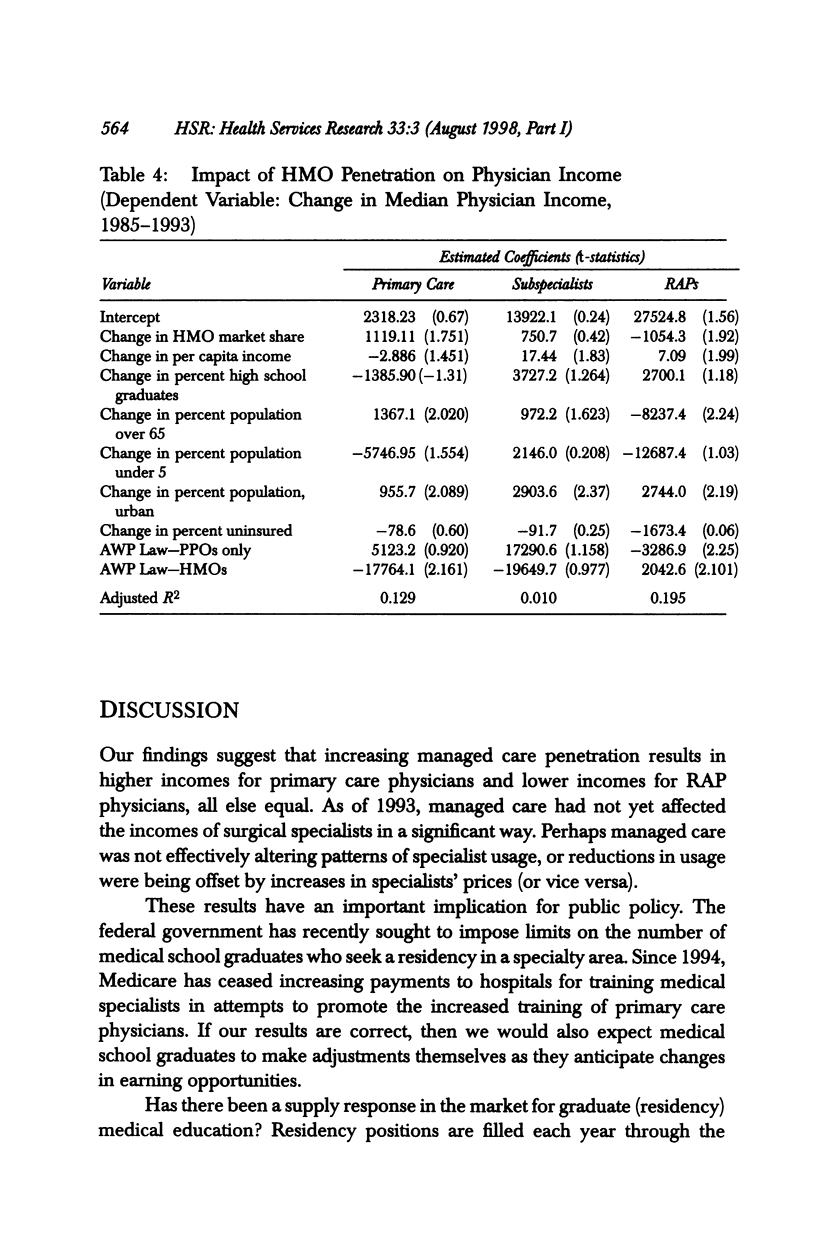
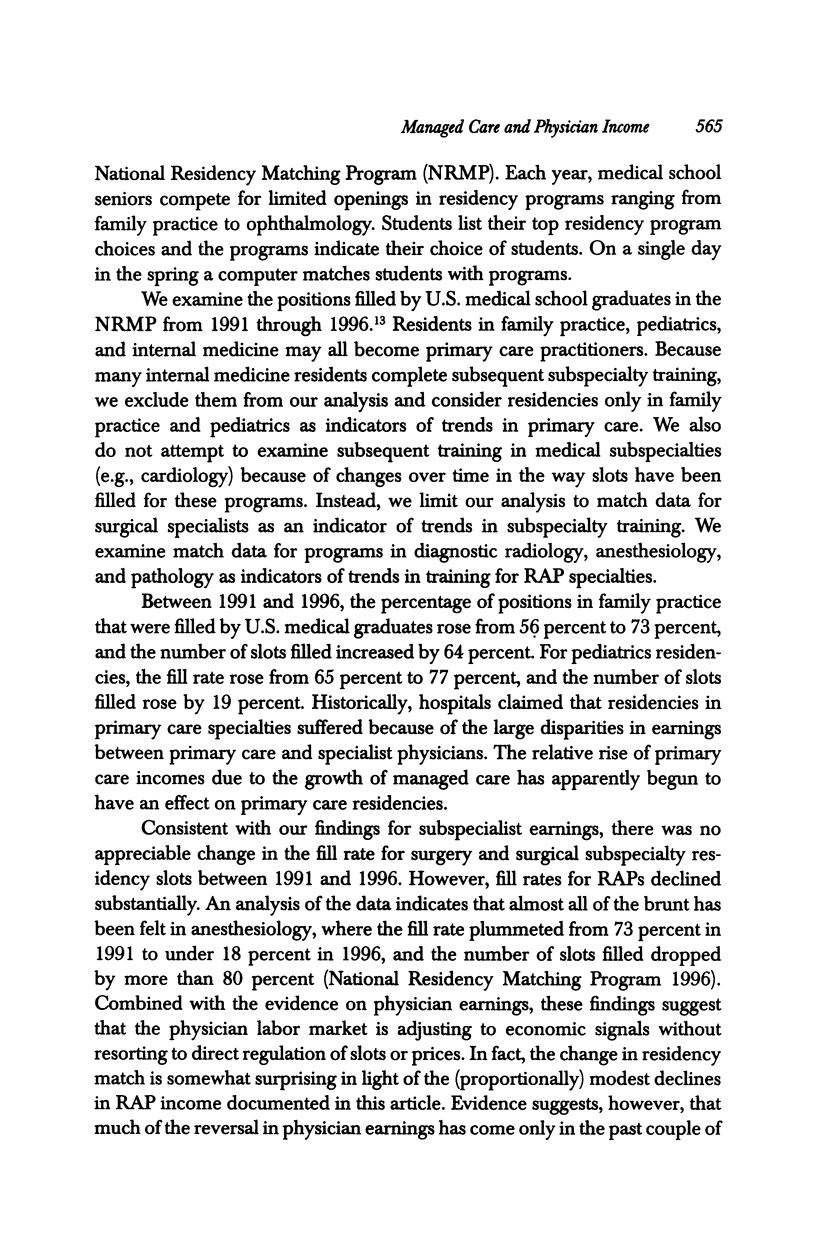
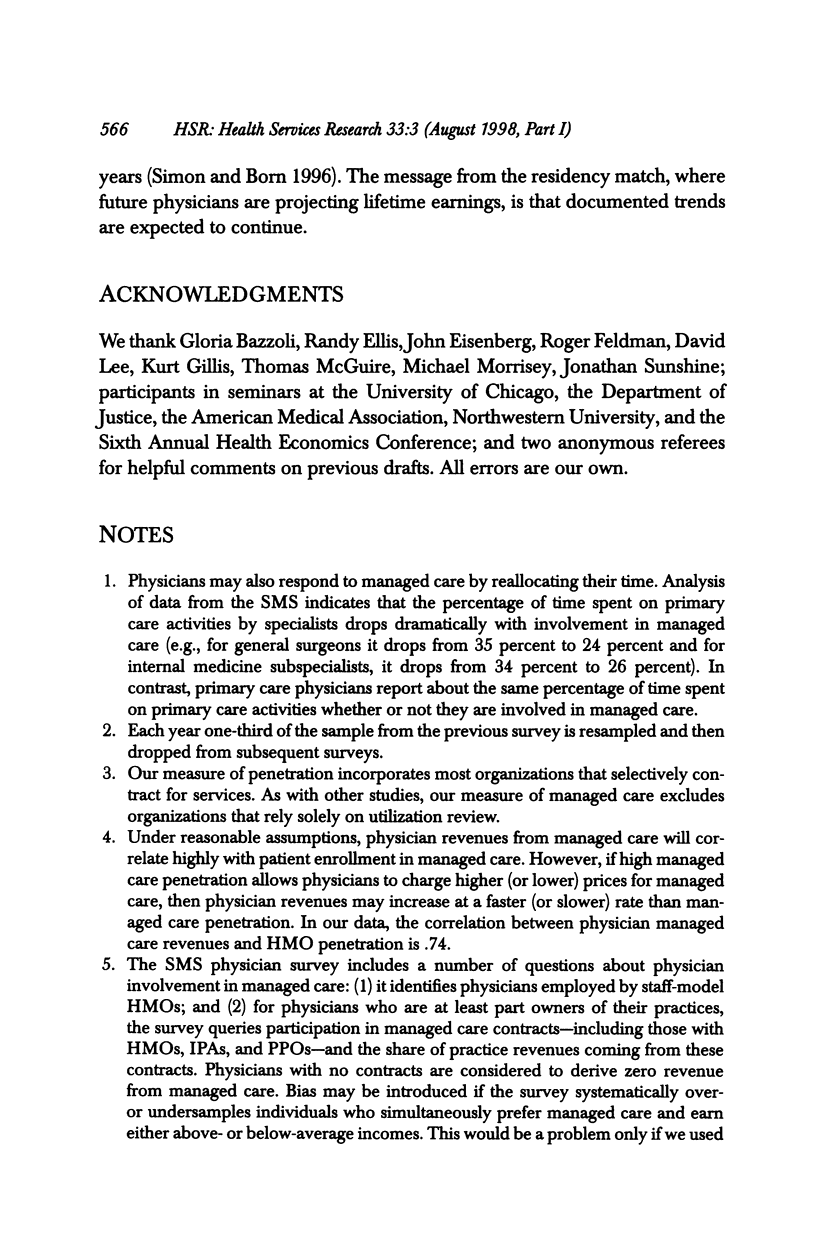


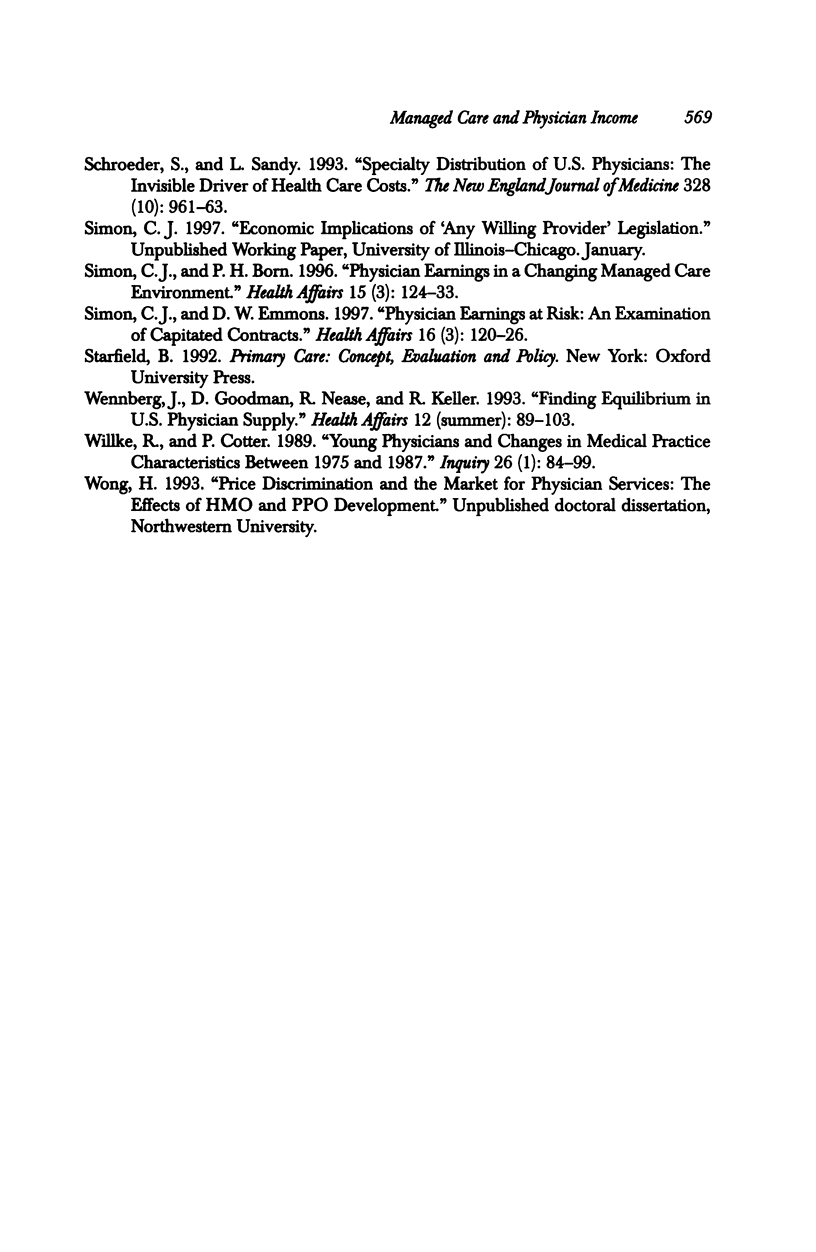
Selected References
These references are in PubMed. This may not be the complete list of references from this article.
- Fuchs V. R. The supply of surgeons and the demand for operations. J Hum Resour. 1978;13 (Suppl):35–56. [PubMed] [Google Scholar]
- Given R. S. Economies of scale and scope as an explanation of merger and output diversification activities in the health maintenance organization industry. J Health Econ. 1996 Dec;15(6):685–713. doi: 10.1016/s0167-6296(96)00500-0. [DOI] [PubMed] [Google Scholar]
- Grumbach K., Lee P. R. How many physicians can we afford? JAMA. 1991 May 8;265(18):2369–2372. [PubMed] [Google Scholar]
- Hill S. C., Wolfe B. L. Testing the HMO competitive strategy: an analysis of its impact on medical resources. J Health Econ. 1997 Jun;16(3):261–286. doi: 10.1016/s0167-6296(96)00538-3. [DOI] [PubMed] [Google Scholar]
- Kronick R., Goodman D. C., Wennberg J., Wagner E. The marketplace in health care reform. The demographic limitations of managed competition. N Engl J Med. 1993 Jan 14;328(2):148–152. doi: 10.1056/nejm199301143280225. [DOI] [PubMed] [Google Scholar]
- Manning W. G., Leibowitz A., Goldberg G. A., Rogers W. H., Newhouse J. P. A controlled trial of the effect of a prepaid group practice on use of services. N Engl J Med. 1984 Jun 7;310(23):1505–1510. doi: 10.1056/NEJM198406073102305. [DOI] [PubMed] [Google Scholar]
- McKay N. L. The economic determinants of specialty choice by medical residents. J Health Econ. 1990 Nov;9(3):335–357. doi: 10.1016/0167-6296(90)90050-d. [DOI] [PubMed] [Google Scholar]
- McLaughlin C. G. Market responses to HMOs: price competition or rivalry? Inquiry. 1988 Summer;25(2):207–218. [PubMed] [Google Scholar]
- Miller R. H., Luft H. S. Managed care plan performance since 1980. A literature analysis. JAMA. 1994 May 18;271(19):1512–1519. [PubMed] [Google Scholar]
- Schroeder S. A., Sandy L. G. Specialty distribution of U.S. physicians--the invisible driver of health care costs. N Engl J Med. 1993 Apr 1;328(13):961–963. doi: 10.1056/NEJM199304013281312. [DOI] [PubMed] [Google Scholar]
- Simon C. J., Born P. H. Physician earnings in a changing managed care environment. Health Aff (Millwood) 1996 Fall;15(3):124–133. doi: 10.1377/hlthaff.15.3.124. [DOI] [PubMed] [Google Scholar]
- Simon C. J., Emmons D. W. Physician earnings at risk: an examination of capitated contracts. Health Aff (Millwood) 1997 May-Jun;16(3):120–126. doi: 10.1377/hlthaff.16.3.120. [DOI] [PubMed] [Google Scholar]
- Wennberg J. E., Goodman D. C., Nease R. F., Keller R. B. Finding equilibrium in U.S. physician supply. Health Aff (Millwood) 1993 Summer;12(2):89–103. doi: 10.1377/hlthaff.12.2.89. [DOI] [PubMed] [Google Scholar]
- Willke R. J., Cotter P. S. Young physicians and changes in medical practice characteristics between 1975 and 1987. Inquiry. 1989 Spring;26(1):84–99. [PubMed] [Google Scholar]


